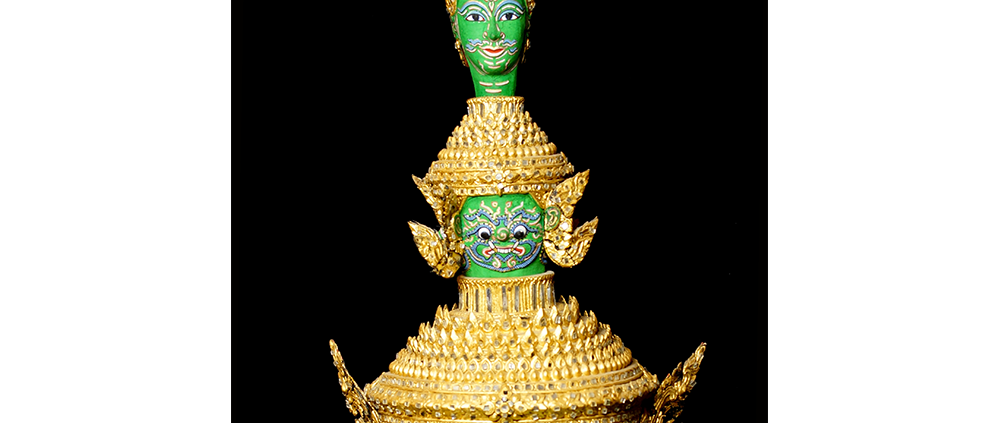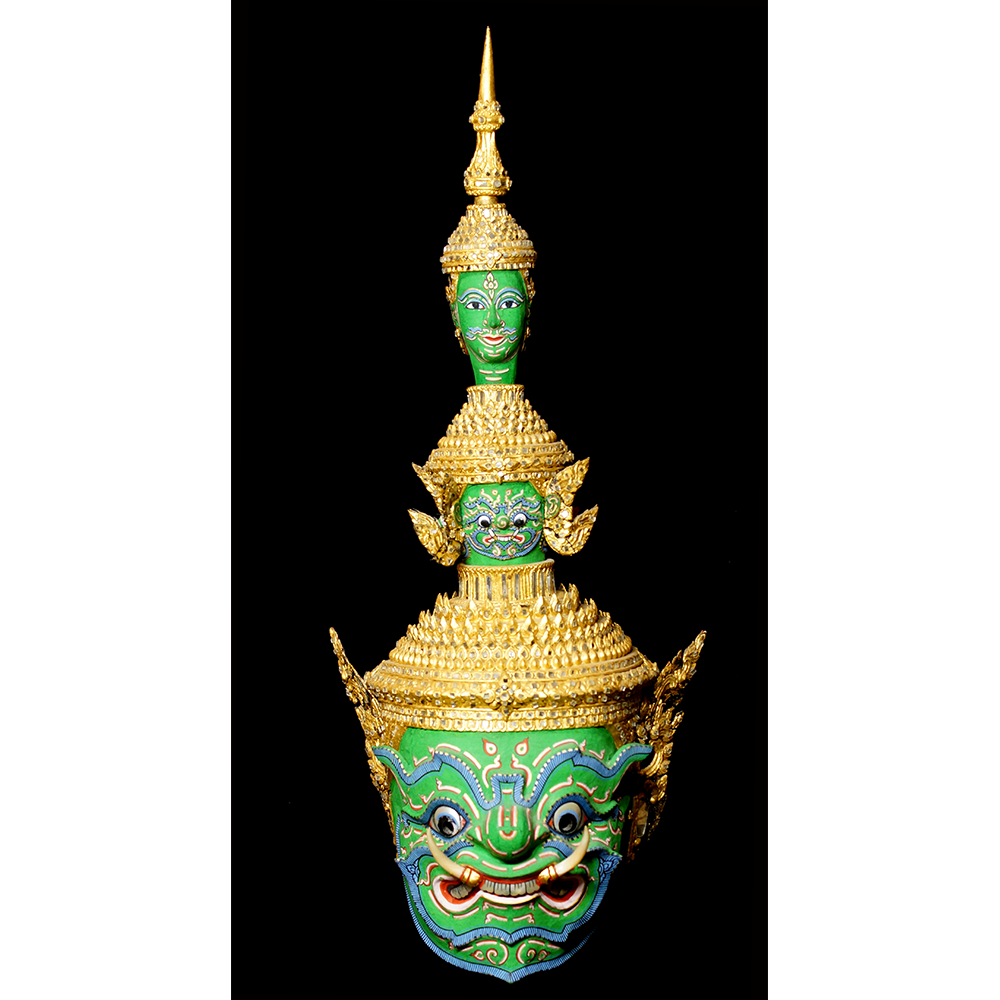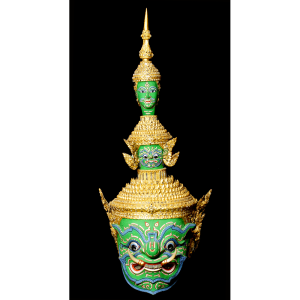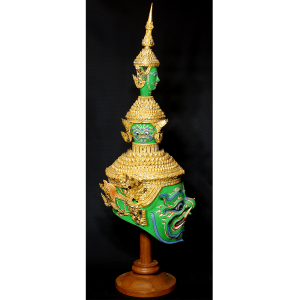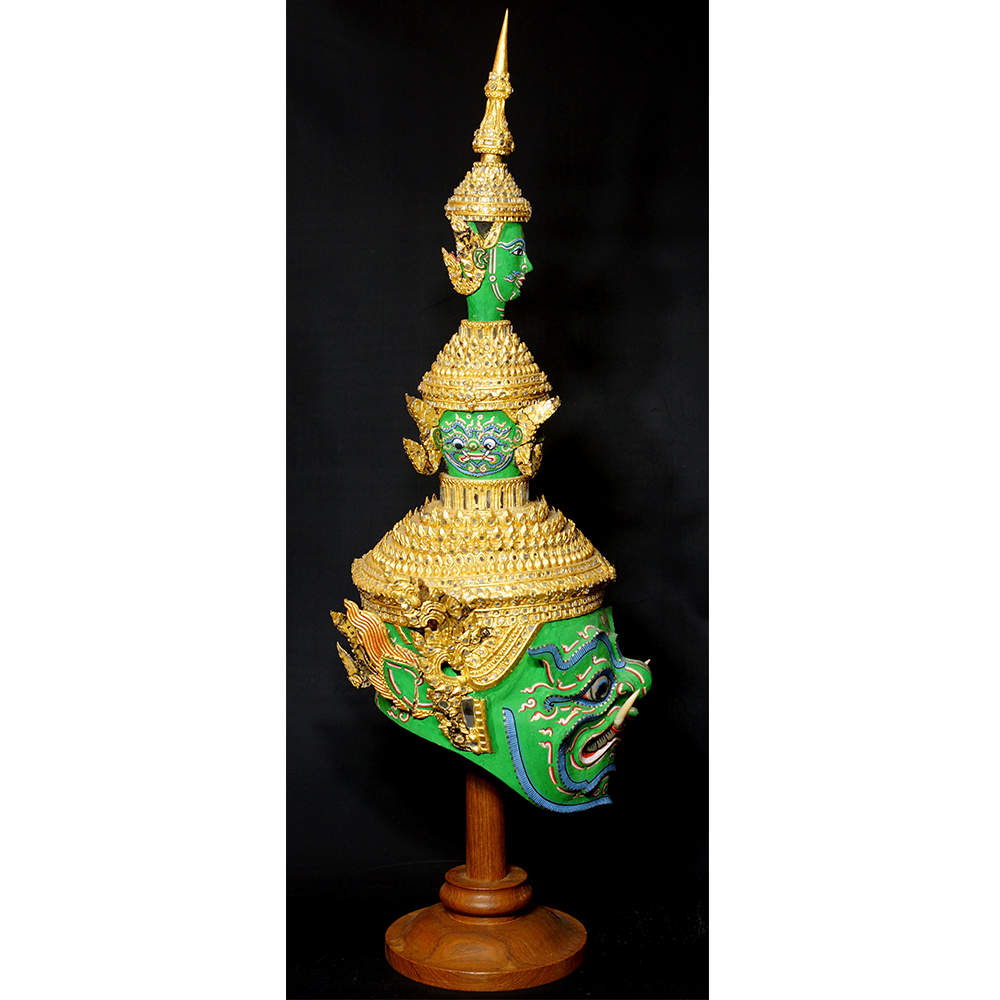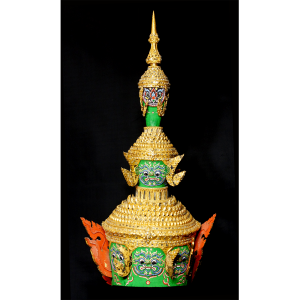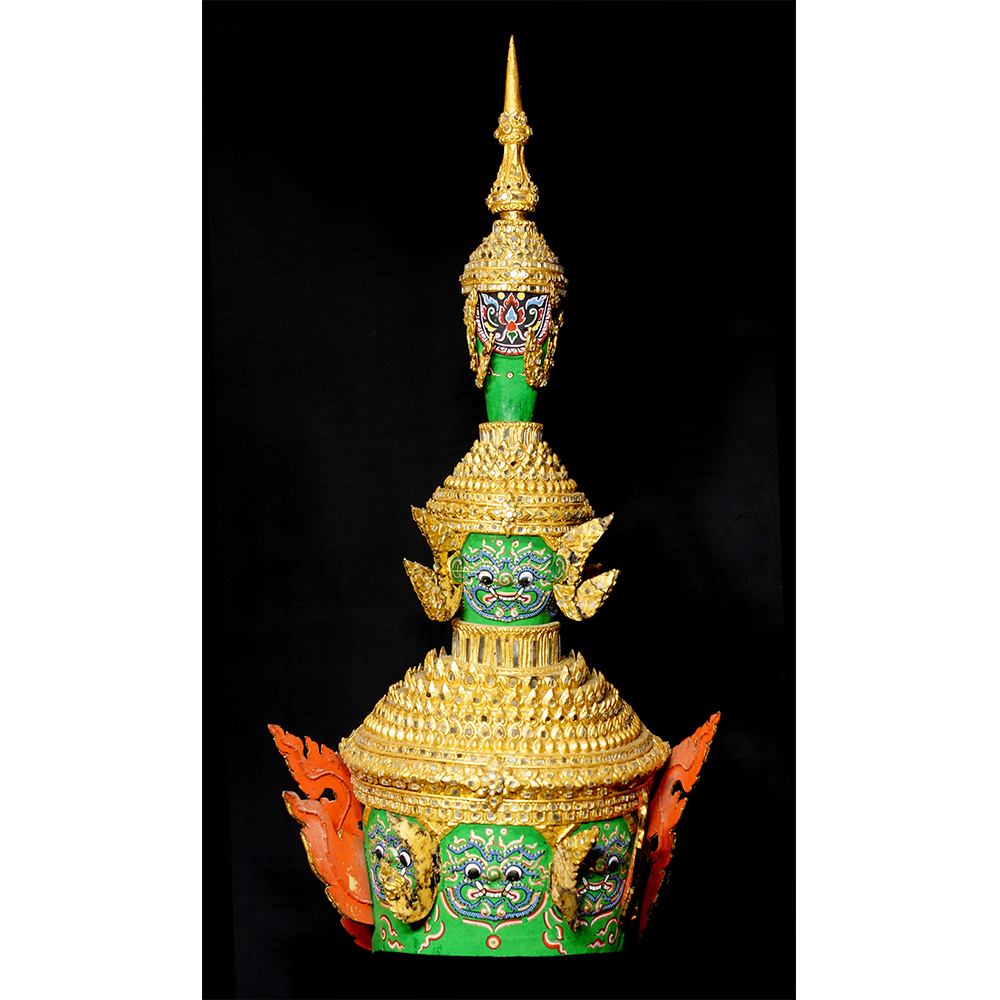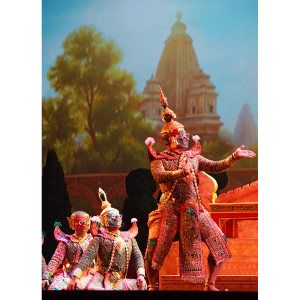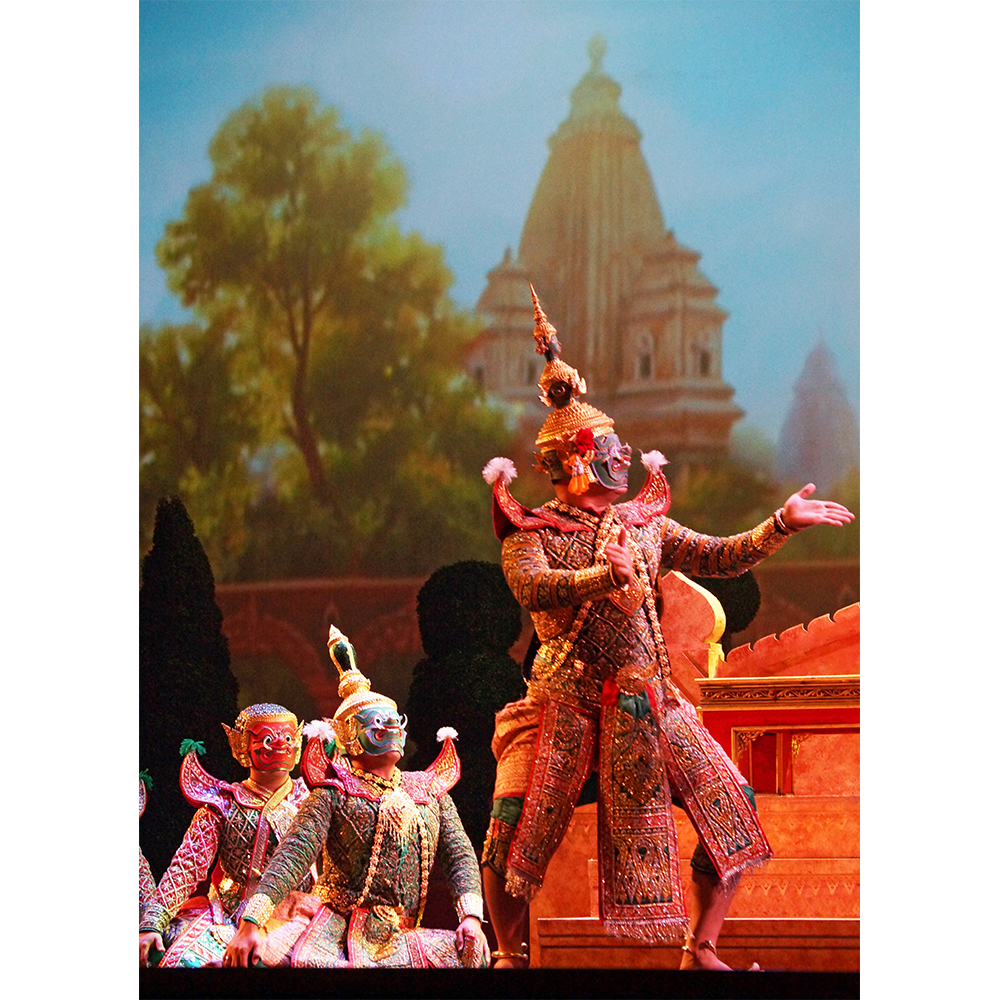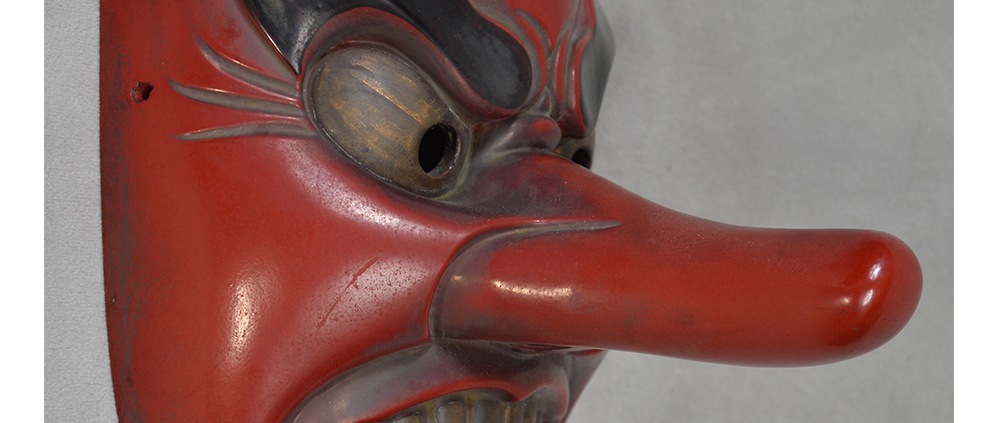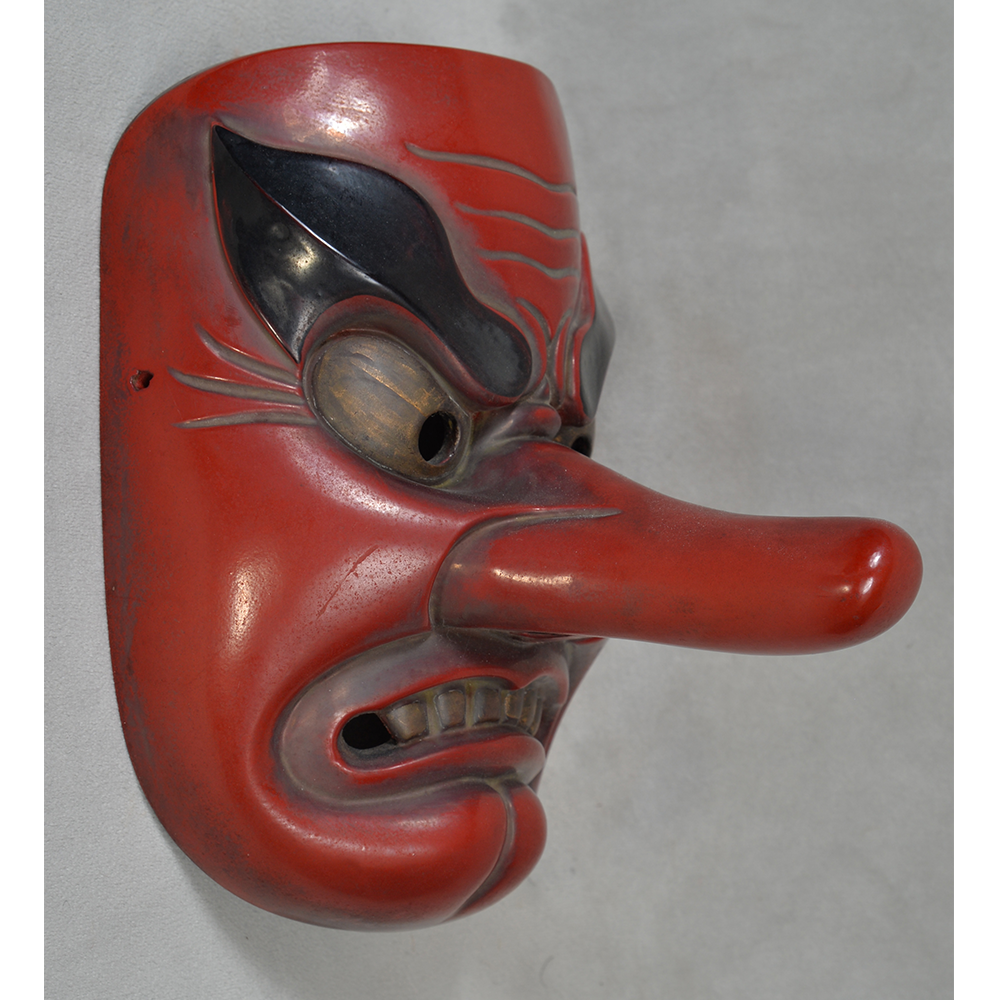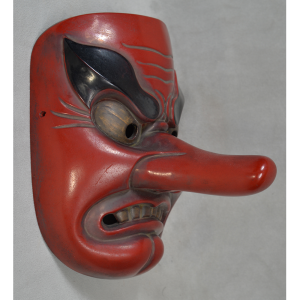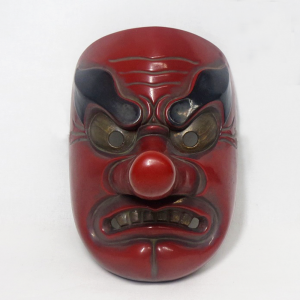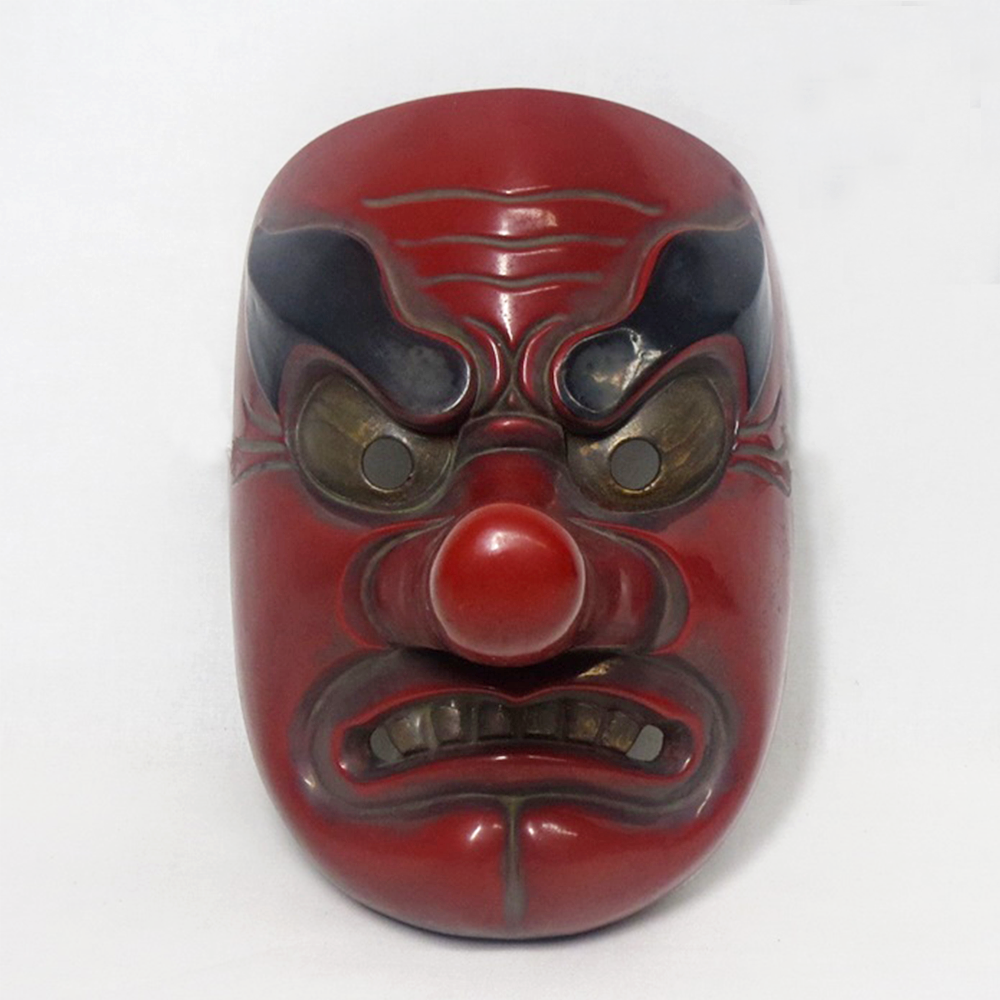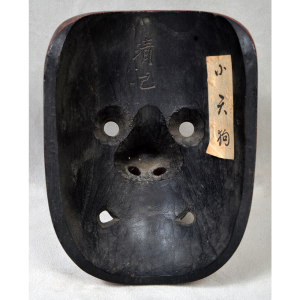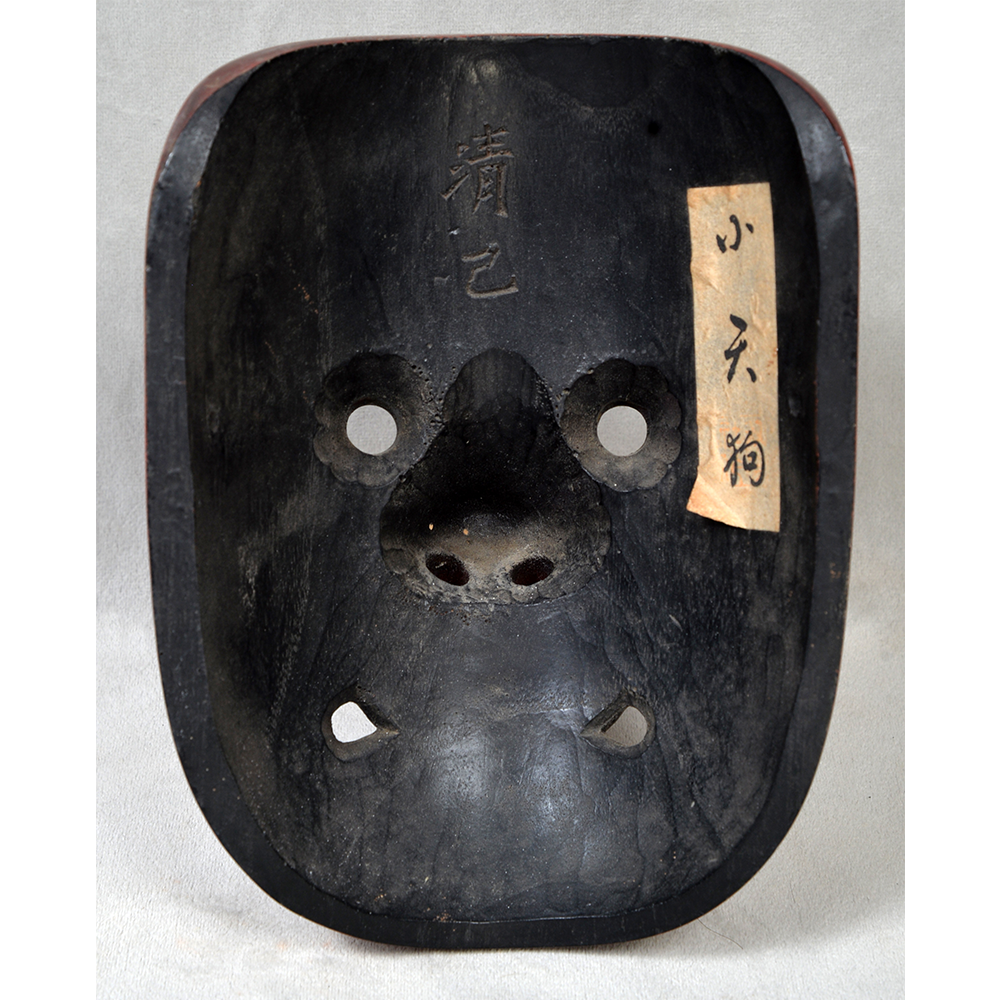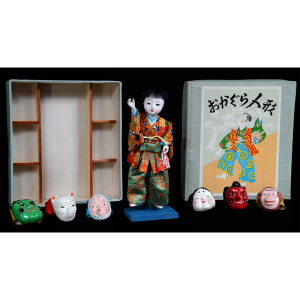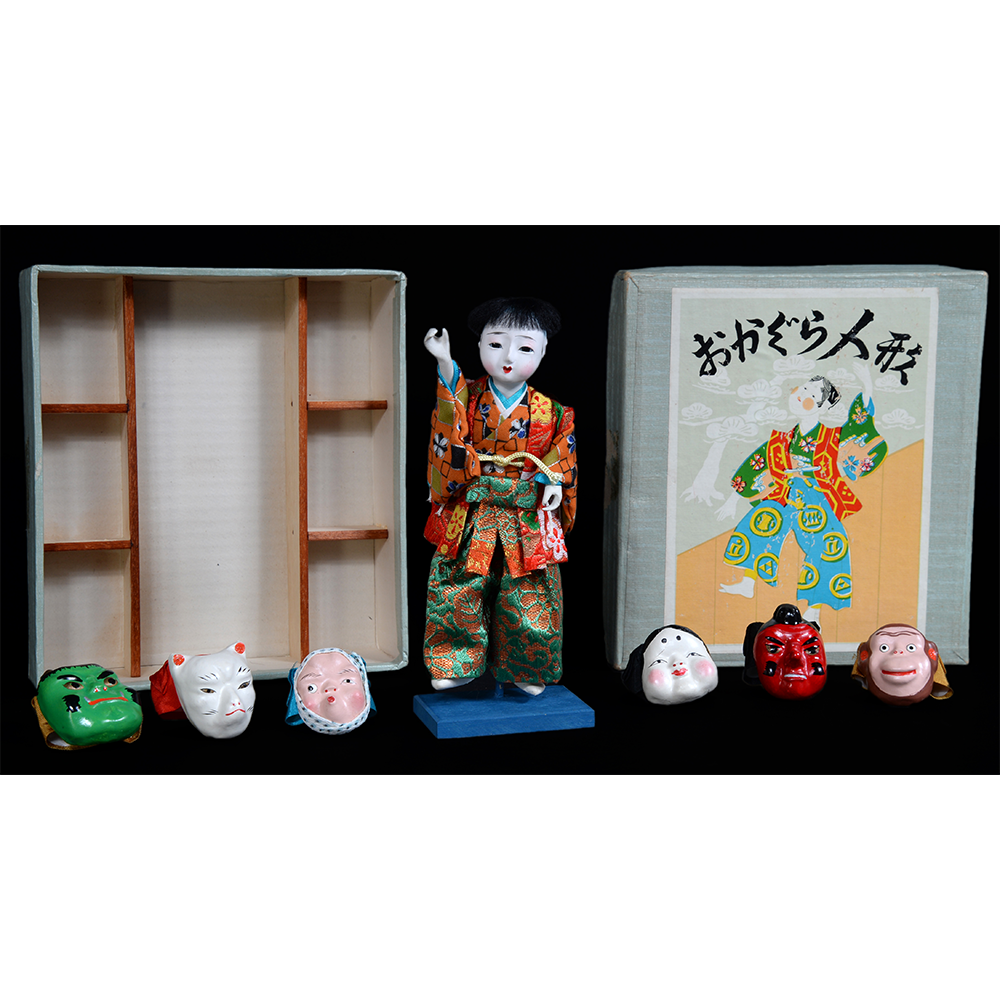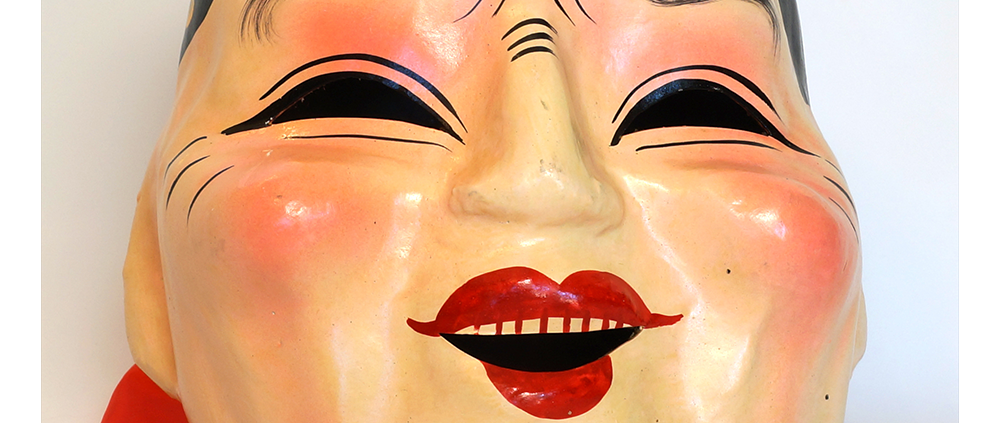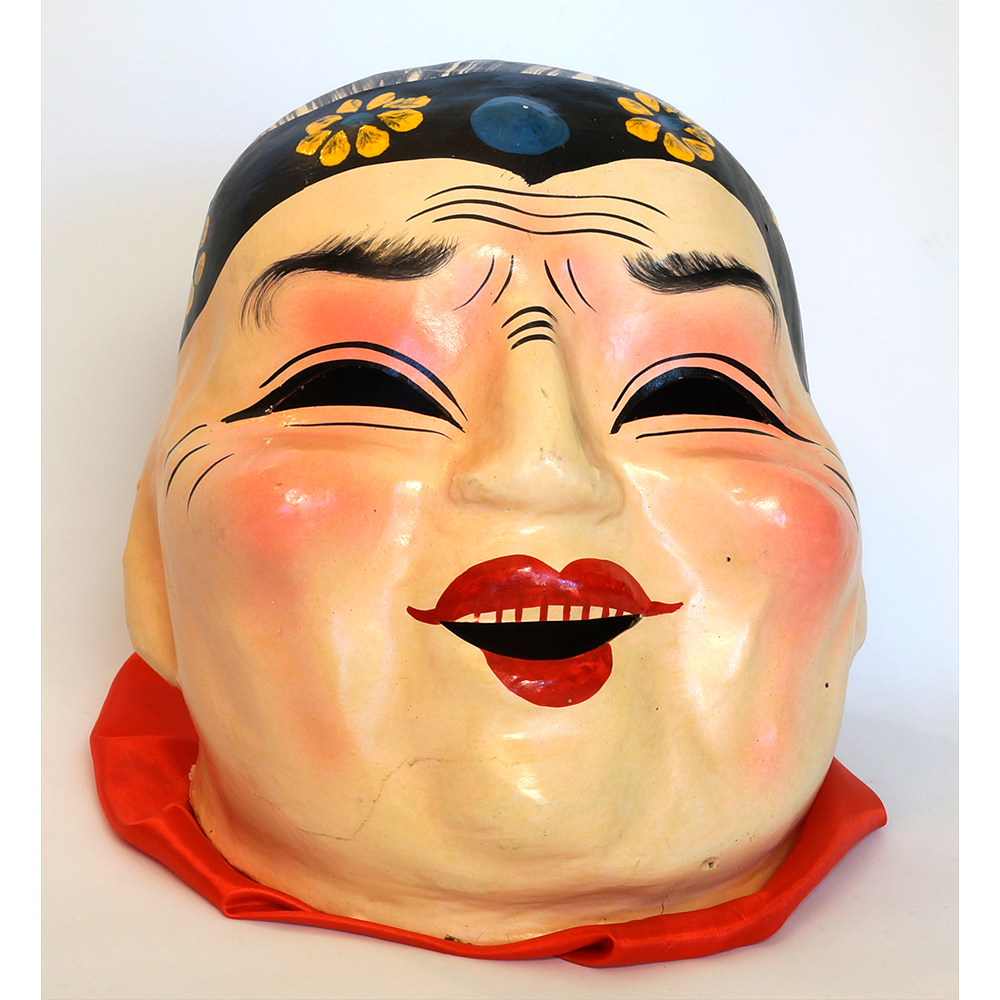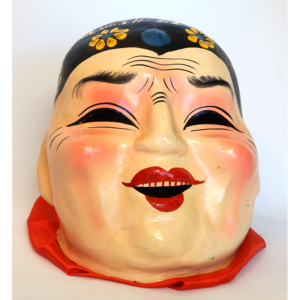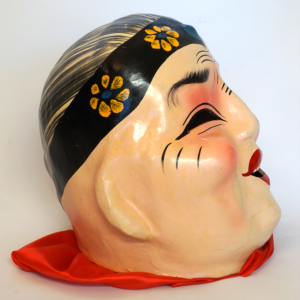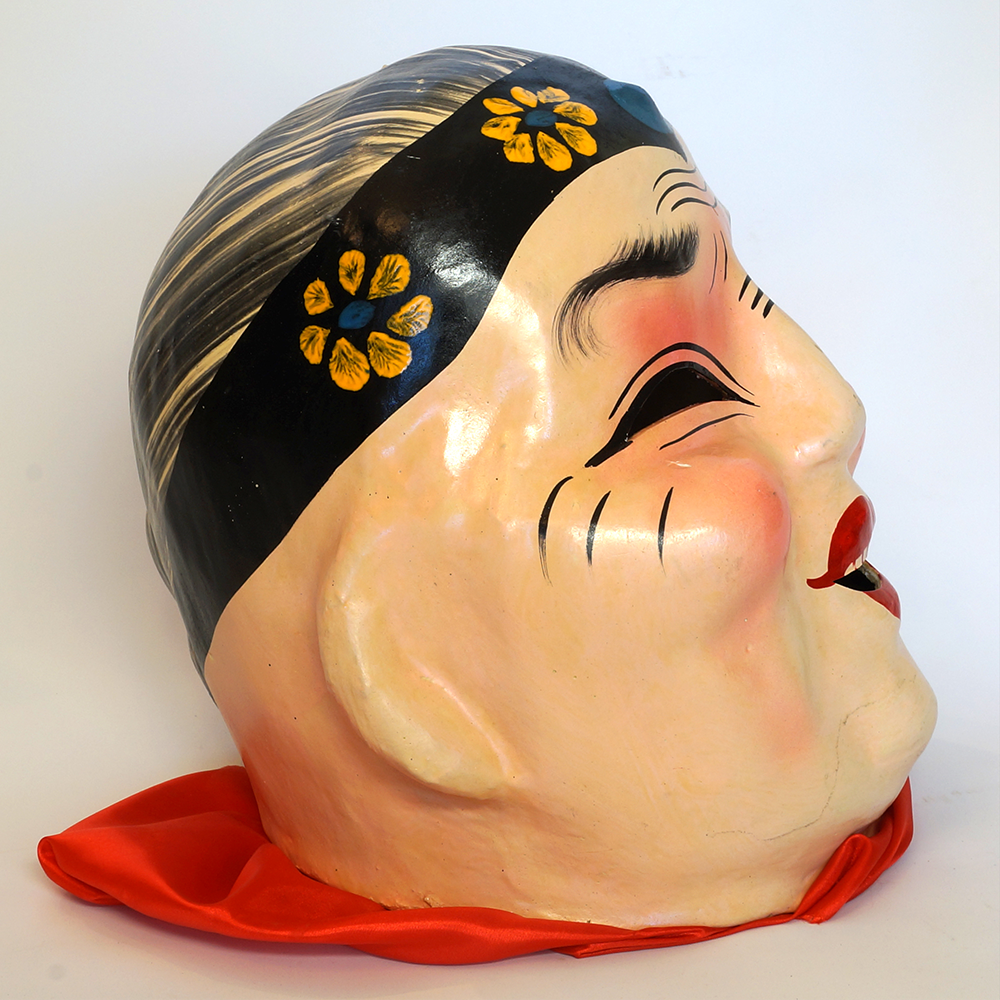TITLE: Totsakan Khon Mask
TYPE: helmet mask
GENERAL REGION: Asia
COUNTRY: Thailand
SUBREGION: Bangkok
ETHNICITY: Thai
DESCRIPTION: Totsakan (Green) Khon
CATALOG ID: ASTH004
MAKER: Unknown
CEREMONY: Ramakien Dance Drama
AGE: 1960s
MAIN MATERIAL: paper maché
OTHER MATERIALS: plaster; gilding; mirrors; paint; mother-of-pearl teeth; wooden fangs
The Ramakien is the Thai adaptation of the traditional Hindu epic from India, the Ramayana. Most male characters in the drama wear masks fashioned from paper maché and elaborately gilded, decorated, and painted.
This mask represents the demon king Totsakan, also written Tosakanth (or Ravana in Hindi), who is supposed to have 100 faces and 20 hands. His face is green during most of the play, but when he ascends to power his face turns gold. Totsakan is the villain at the center of the Ramakien, as he abducts Sita, the beautiful wife of the hero, King Rama. The remainder of the play focuses on Rama’s efforts, with his loyal demigod ally Hanuman, to rescue Sita and punish Totsakan.
For more on Thai khon masks, see Natthapatra Chandavij & Promporn Pramualratana, Thai Puppets and Khon Masks (Bangkok: River Books, 1998).
